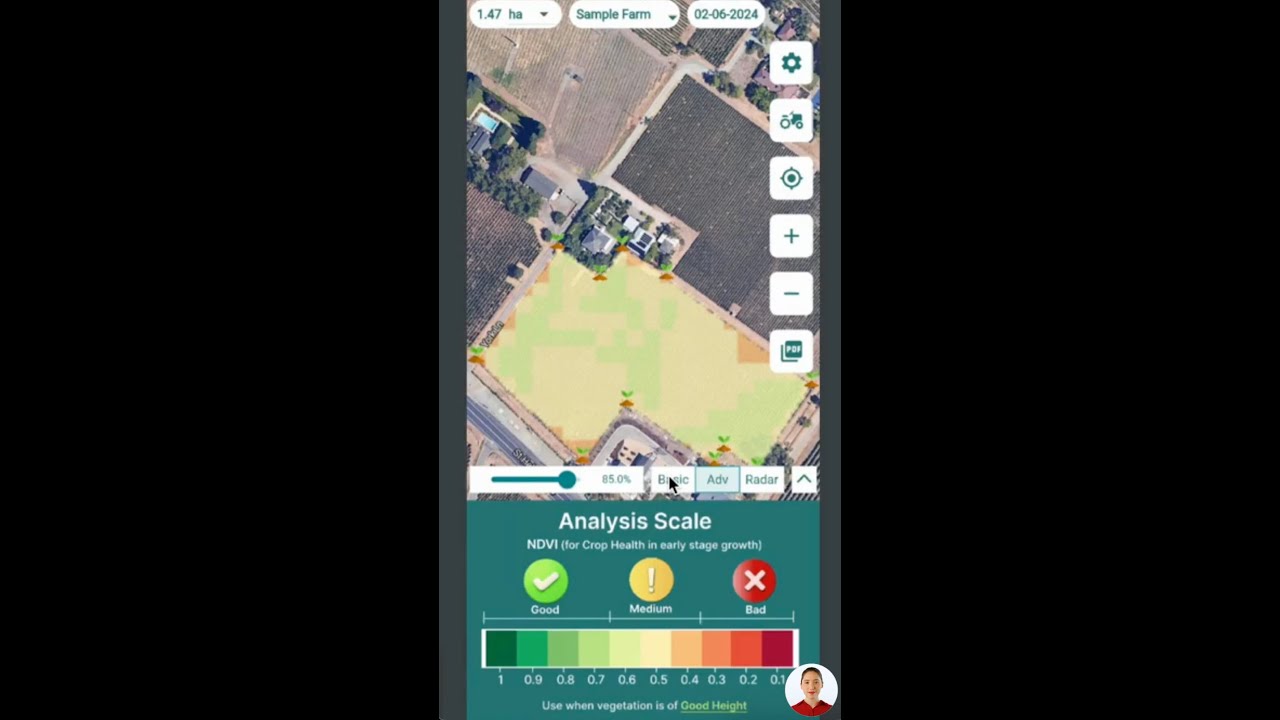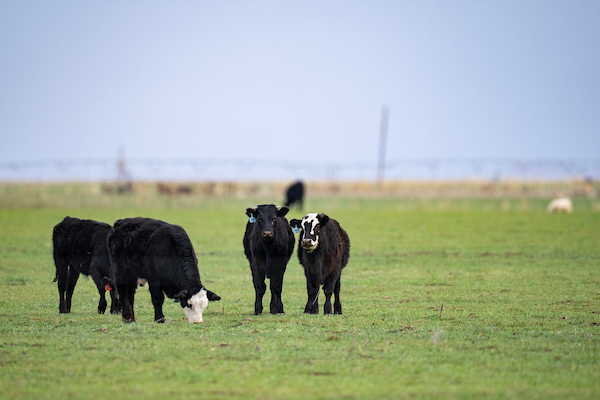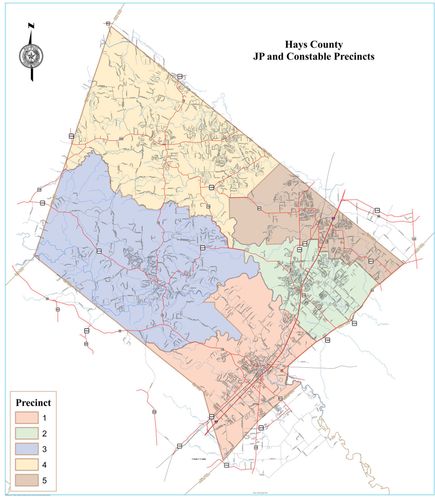Report on Animal Populations in Forest Ecosystems and the Bosque Ecosystem Monitoring Program (BEMP) in the Context of Sustainable Development Goals
Executive Summary
This report analyzes the critical role of animal populations in maintaining forest ecosystem health, using 2025 data from the Bosque Ecosystem Monitoring Program (BEMP) as a primary case study. The findings are framed within the United Nations Sustainable Development Goals (SDGs), with a particular focus on SDG 15 (Life on Land), SDG 13 (Climate Action), SDG 6 (Clean Water and Sanitation), and SDG 17 (Partnerships for the Goals). The BEMP demonstrates that long-term ecological monitoring is essential for developing evidence-based strategies that protect biodiversity, enhance ecosystem resilience, and achieve global sustainability targets. Monitoring data from 2025 indicates that over 120 animal species contribute to the bosque’s health, and their activities have increased overall habitat resilience by an estimated 18%.
1.0 Introduction: Forest Ecosystems and Alignment with Global Sustainability Mandates
Forests, such as the riparian woodlands (bosques) of the southwestern United States, are critical hubs of biodiversity. These complex ecosystems, comprising animals, plants, and microorganisms, are fundamental to achieving global environmental balance. However, they face significant threats from climate change and human activity, jeopardizing progress toward key Sustainable Development Goals.
The Bosque Ecosystem Monitoring Program (BEMP) in New Mexico provides a vital framework for understanding these dynamics. By collecting long-term data on animal populations and their interactions with the environment, the program offers insights that directly support the following SDGs:
- SDG 15 (Life on Land): Protecting, restoring, and promoting the sustainable use of terrestrial ecosystems and halting biodiversity loss.
- SDG 13 (Climate Action): Strengthening resilience and adaptive capacity to climate-related hazards.
- SDG 6 (Clean Water and Sanitation): Protecting and restoring water-related ecosystems.
This report outlines the ecological functions of animals within the bosque, presents key findings from 2025 BEMP data, and discusses how innovative monitoring technologies contribute to sustainable forest management.
2.0 The Ecological Contribution of Animal Populations to Forest Health
Animal species are integral to the structure and function of forest ecosystems. Their activities are directly linked to the targets of SDG 15, ensuring the health and regeneration of terrestrial habitats.
2.1 Key Ecological Functions Supporting SDG 15
- Regulation of Vegetation: Herbivores influence forest structure and diversity through selective browsing, creating niches for new growth.
- Trophic Balance: Predators control herbivore populations, preventing overgrazing and protecting plant communities, a key component of ecosystem stability.
- Seed Dispersal and Pollination: Birds, bats, and mammals facilitate genetic diversity and forest regeneration, enhancing ecosystem resilience.
- Nutrient Cycling: Invertebrates and scavengers are crucial for decomposition, which maintains soil fertility and underpins the entire ecosystem’s productivity. This process is fundamental to reversing land degradation (SDG 15.3).
- Habitat Engineering: Keystone species like beavers modify hydrological systems, creating wetlands that significantly boost biodiversity and support water-related ecosystems (SDG 6.6).
3.0 The Bosque Ecosystem Monitoring Program (BEMP): A Model for SDG 17
Established in the 1990s, the BEMP is a long-term monitoring initiative in the Middle Rio Grande’s riparian forests. It serves as an exemplary model of SDG 17 (Partnerships for the Goals) by uniting scientists, managers, educators, and community members in a collaborative effort to generate actionable environmental data.
3.1 Core Monitoring Activities
- Wildlife Surveys: Systematic monitoring of bird, mammal, amphibian, and invertebrate populations, including endangered species, to track biodiversity trends (SDG 15.5).
- Vegetation Assessments: Analysis of plant community composition, health, and regeneration patterns.
- Hydrological and Soil Analysis: Measurement of water availability, groundwater levels, and soil health, providing critical data for managing water resources (SDG 6).
- Integration of Remote Sensing: Use of satellite and drone technology for landscape-level analysis of environmental changes.
- Community and Educational Outreach: Engaging students and citizens in data collection, fostering environmental stewardship and scientific literacy.
4.0 Analysis of Key Animal Interactions and Their Ecosystem Services
BEMP data reveals how specific animal groups function as drivers of ecological balance, providing services essential for meeting sustainability targets.
4.1 Ecosystem Engineers: The North American Beaver
- Contribution to SDG 6: By constructing dams, beavers create wetlands, which slows water flow, recharges groundwater, and mitigates floods.
- Contribution to SDG 15: These engineered wetlands increase habitat complexity, supporting a wide array of aquatic and terrestrial species and thus boosting biodiversity.
4.2 Pollinators and Seed Dispersers: Birds and Bats
- Contribution to SDG 15: Pollinators are essential for the reproduction of native flora. Seed dispersal by birds promotes genetic mixing and forest regeneration across fragmented landscapes.
4.3 Trophic Regulators: Predators and Herbivores
- Contribution to SDG 15: Predators such as coyotes and raptors maintain trophic stability by controlling herbivore populations, preventing the degradation of plant communities. Herbivores, in turn, shape the forest understory.
4.4 Foundational Processes: Decomposers
- Contribution to SDG 15.3: Invertebrates and other decomposers recycle organic matter into the soil, a foundational process for combating land degradation and maintaining ecosystem productivity.
5.0 2025 Biodiversity Monitoring Data from the BEMP
The following table summarizes 2025 monitoring data for key species within the bosque. This data is crucial for assessing progress toward SDG 15 targets, particularly those related to protecting threatened species and maintaining ecosystem health.
| Animal Species | Estimated Population (2025) | Trophic Level | Primary Ecological Role | Conservation Status (IUCN) | Trend vs. 2024 |
|---|---|---|---|---|---|
| Southwestern willow flycatcher | ~85 individuals | Insectivore | Indicator species, Pest control | Endangered | Stable |
| North American beaver | ~150 individuals | Herbivore/Ecosystem engineer | Wetland creation, Water regulation | Least Concern | Increased |
| White-tailed deer | ~460 individuals | Herbivore | Selective browsing, Seed dispersal | Least Concern | Stable |
| Coyote | ~95 individuals | Carnivore | Predator (controls herbivore populations) | Least Concern | Increased |
| Desert cottontail rabbit | ~500 individuals | Herbivore | Vegetation control, Prey species | Least Concern | Stable |
| Western chorus frog | ~200 individuals | Omnivore | Indicator species, Pest control | Least Concern | Decreased |
| Desert bighorn sheep | ~40 individuals | Herbivore | Vegetation browsing | Vulnerable | Stable |
| Tiger salamander | ~70 individuals | Omnivore | Amphibian diversity, Pest control | Least Concern | Stable |
| Invertebrates (aggregate) | Multi-thousands | Decomposer/Primary consumer | Soil aeration, Nutrient cycling | Varies | Stable |
| Common raven | ~120 individuals | Omnivore | Seed dispersal, Scavenging | Least Concern | Increased |
6.0 The Role of Technology in Achieving Sustainability Outcomes
Modern monitoring technologies are instrumental in advancing the objectives of the SDGs. The integration of satellite data and AI, in line with SDG 9 (Industry, Innovation, and Infrastructure), enhances the capacity for effective and adaptive ecosystem management.
6.1 Applications of Advanced Monitoring
- High-Frequency Vegetation Analysis: Satellite indices (e.g., NDVI) allow for near real-time tracking of vegetation health, revealing the impacts of animal activity and climate stress.
- Hydrological Monitoring: Remote sensing provides critical data on water availability and wetland extent, essential for managing habitats for species like beavers and amphibians (SDG 6).
- Predictive Analytics: AI-powered analysis of long-term datasets helps forecast ecological shifts, enabling proactive interventions to build climate resilience (SDG 13).
7.0 Management Implications and Strategies for Climate Resilience
The 2025 BEMP findings inform adaptive management strategies designed to counter environmental pressures and build resilience, directly addressing the targets of SDG 13 and SDG 15.
7.1 Key Management Strategies
- Invasive Species Control: Managing invasive plants like tamarisk is critical for restoring native habitats and supporting the animal communities that depend on them, a direct action under SDG 15.8.
- Hydrological Restoration: Data-driven efforts to restore natural river flows and support beaver recolonization act as catalysts for habitat renewal and biodiversity enhancement.
- Building Climate Resilience (SDG 13): Long-term monitoring helps identify climate refugia and informs strategies to protect genetic diversity, which is crucial for enabling species to adapt to changing environmental conditions.
8.0 Conclusion: An Integrated Approach to Forest Conservation
The research conducted through the Bosque Ecosystem Monitoring Program confirms that healthy animal populations are indispensable to the function and resilience of forest ecosystems. The program’s success demonstrates that an integrated approach, combining long-term field science, community engagement (SDG 17), and technological innovation (SDG 9), provides a robust framework for achieving global sustainability targets. The data and strategies derived from BEMP are essential for protecting biodiversity (SDG 15), enhancing climate resilience (SDG 13), and ensuring the sustainable management of water-related ecosystems (SDG 6) for future generations.
1. SDGs Addressed in the Article
The article on the Bosque Ecosystem Monitoring Program (BEMP) addresses several Sustainable Development Goals by focusing on biodiversity, ecosystem health, climate resilience, water management, and community engagement. The primary SDGs are:
- SDG 15: Life on Land
- SDG 13: Climate Action
- SDG 6: Clean Water and Sanitation
- SDG 17: Partnerships for the Goals
2. Specific SDG Targets Identified
SDG 15: Life on Land
This is the most central SDG in the article. The entire text revolves around the protection, restoration, and sustainable management of the bosque, a terrestrial forest ecosystem.
- Target 15.1: By 2020, ensure the conservation, restoration and sustainable use of terrestrial and inland freshwater ecosystems and their services, in particular forests, wetlands, mountains and drylands.
- Explanation: The article extensively discusses the BEMP’s work in monitoring and understanding the “riparian cottonwood-willow forests” to maintain their “balance, health, and resilience.” It also details restoration efforts, such as “replanting with native flora” and “wetland restoration.”
- Target 15.2: By 2020, promote the implementation of sustainable management of all types of forests, halt deforestation, restore degraded forests and substantially increase afforestation and reforestation globally.
- Explanation: The article highlights “adaptive, evidence-based management” strategies informed by BEMP data. It also discusses the use of modern tools like satellite monitoring and AI to support “sustainable forest management.”
- Target 15.5: Take urgent and significant action to reduce the degradation of natural habitats, halt the loss of biodiversity and, by 2020, protect and prevent the extinction of threatened species.
- Explanation: A core theme is halting biodiversity loss. The article mentions monitoring “over 120 animal species” and specifically tracks the population and conservation status of threatened species, such as the “Southwestern willow flycatcher” (Endangered) and the “Desert bighorn sheep” (Vulnerable).
- Target 15.8: By 2020, introduce measures to prevent the introduction and significantly reduce the impact of invasive alien species on land and water ecosystems and control or eradicate the priority species.
- Explanation: The article explicitly identifies the “expansion of non-native tamarisk trees” as a challenge and describes solutions, including “targeted mechanical removal, controlled burns, and the introduction of biological controls.”
SDG 13: Climate Action
The article connects ecosystem health directly to climate change challenges and resilience-building efforts.
- Target 13.1: Strengthen resilience and adaptive capacity to climate-related hazards and natural disasters in all countries.
- Explanation: The text states that “ongoing climate variations—with increasing drought periods, hotter temperatures, and more severe storms—continue to stress native habitats.” It then describes how monitoring and adaptive management are “building pathways for resilience” and helping to “buffer animal and plant populations from environmental extremes.”
SDG 6: Clean Water and Sanitation
The focus on a riparian (river-related) ecosystem makes water a critical component of the discussion.
- Target 6.6: By 2020, protect and restore water-related ecosystems, including mountains, forests, wetlands, rivers, aquifers and lakes.
- Explanation: The article details how beavers create wetlands, which “slow water flow, raise groundwater tables.” It also discusses challenges from “altered water regimes” and solutions like “river flow & wetland restoration” to support the health of the entire riparian ecosystem.
SDG 17: Partnerships for the Goals
The collaborative nature of the BEMP initiative is a key feature highlighted in the text.
- Target 17.16: Enhance the global partnership for sustainable development, complemented by multi-stakeholder partnerships that mobilize and share knowledge, expertise, technology and financial resources.
- Explanation: The BEMP is described as a program that “brings together scientists, environmental managers, educators, and local communities for ongoing, collaborative research.” This multi-stakeholder model is central to its success.
- Target 17.18: By 2020, enhance capacity-building support to developing countries…to increase significantly the availability of high-quality, timely and reliable data.
- Explanation: A major focus of the article is the importance of data. It describes how BEMP provides “continuous data and insights” and how new technologies like “satellite data, AI, and field-based assessments” are improving the availability of reliable data for management and policy decisions.
3. Indicators for Measuring Progress
The article mentions or implies several quantitative and qualitative indicators that can be used to measure progress towards the identified targets.
Indicators for SDG 15 (Life on Land)
- Indicator for Target 15.5 (Biodiversity): The article directly references the IUCN Red List of Threatened Species, which is the basis for official indicator 15.5.1 (Red List Index). It provides the “Conservation Status (IUCN)” for multiple species, such as “Endangered” and “Vulnerable.”
- Implied Indicators for Target 15.5:
- Population counts of key species: The table provides “Estimated Population (2025)” for species like the North American beaver (~150) and Southwestern willow flycatcher (~85).
- Population trends: The table includes a “Trend vs. 2024” column, showing whether populations are “Increased,” “Stable,” or “Decreased.”
- Species richness: The article mentions that “Bosque monitoring recorded over 120 animal species.”
- Implied Indicator for Target 15.1 (Ecosystem Health): The article mentions that “Animal activity in monitored forests increased habitat resilience by 18%,” which serves as a direct measure of ecosystem health and resilience.
Indicators for SDG 6 (Clean Water and Sanitation)
- Implied Indicator for Target 6.6 (Water-related Ecosystems): The article discusses using satellite technology for “Hydrological Tracking” and mentions “real-time water measurement APIs” and monitoring “wetland extent.” This aligns with indicator 6.6.1 (Change in the extent of water-related ecosystems over time). The use of the NDWI (Normalized Difference Water Index) is a specific tool mentioned for this purpose.
Indicators for SDG 13 (Climate Action)
- Implied Indicator for Target 13.1 (Resilience): The use of monitoring to identify “climate-resilient areas” and the stated 18% increase in “habitat resilience” serve as direct progress indicators for strengthening adaptive capacity.
4. Summary Table of SDGs, Targets, and Indicators
| SDGs | Targets | Indicators Identified or Implied in the Article |
|---|---|---|
| SDG 15: Life on Land |
15.1: Conserve and restore terrestrial and freshwater ecosystems.
15.5: Halt biodiversity loss and protect threatened species. 15.8: Prevent and reduce the impact of invasive alien species. |
– Percentage increase in habitat resilience (mentioned as 18%). – Implementation of restoration activities (e.g., replanting native flora). – Conservation status of species based on IUCN Red List (e.g., “Endangered,” “Vulnerable”). – Implementation of management programs for invasive species (e.g., tamarisk removal). |
| SDG 13: Climate Action | 13.1: Strengthen resilience and adaptive capacity to climate-related hazards. |
– Identification and protection of “climate-resilient areas.” – Use of adaptive management to “buffer animal and plant populations from environmental extremes.” – Measurement of “habitat resilience.” |
| SDG 6: Clean Water and Sanitation | 6.6: Protect and restore water-related ecosystems. |
– Monitoring of wetland extent, groundwater recharge, and river flow. – Use of satellite indices like NDWI (Normalized Difference Water Index) for hydrological tracking. – Number of beaver recolonization projects to restore wetlands. |
| SDG 17: Partnerships for the Goals |
17.16: Enhance multi-stakeholder partnerships.
17.18: Increase availability of high-quality, timely, and reliable data. |
– Existence of collaborative programs involving scientists, managers, educators, and communities (the BEMP itself). – Number of students and citizens involved in monitoring. – Use of satellite data, AI, and remote sensing to generate continuous data. |
Source: farmonaut.com







